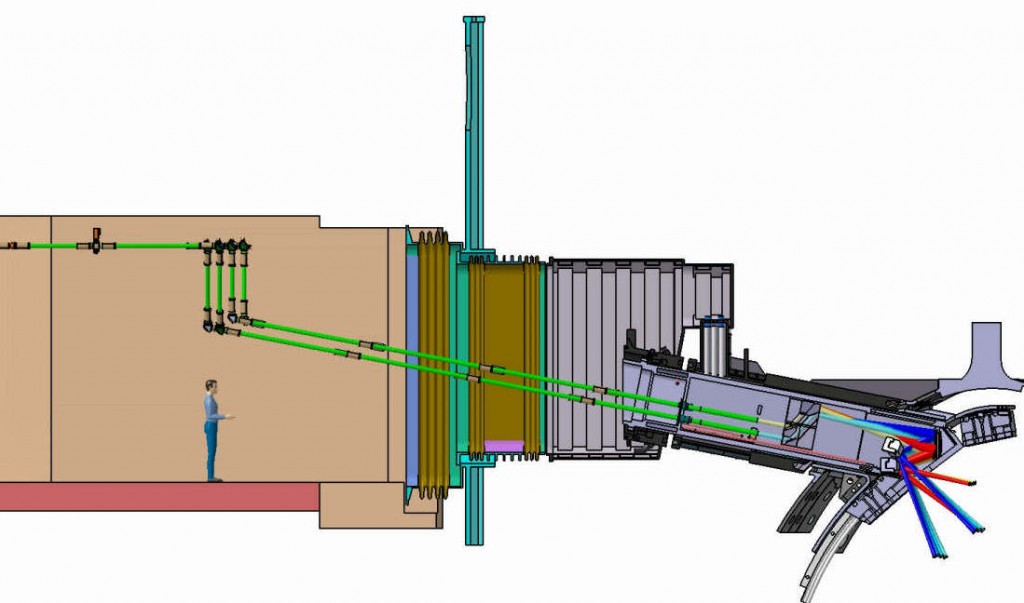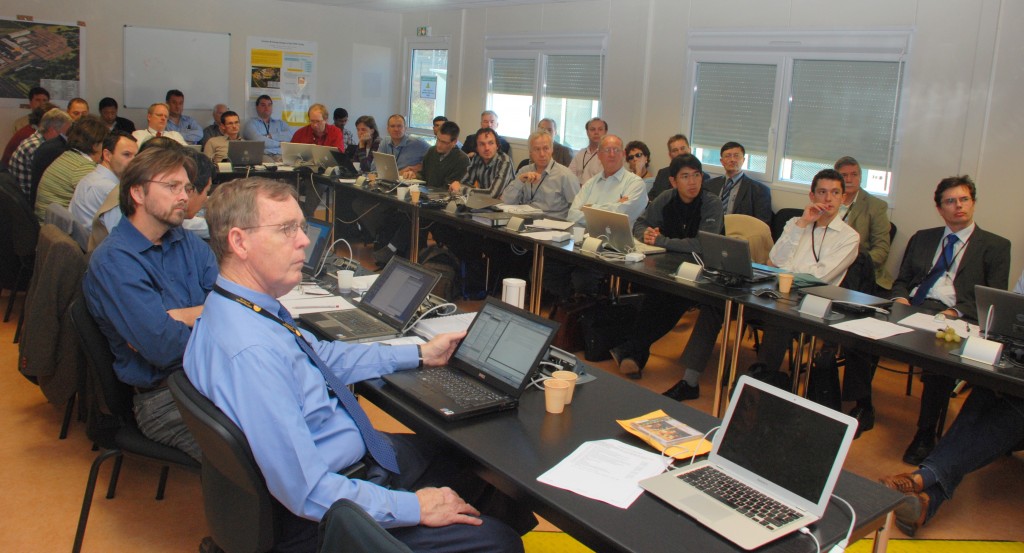ITER NEWSLINE
109
Launching the launcher
Robert Arnoux

The four electron cyclotron upper launchers in ITER will beam energy into the plasma to counter the development of instabilities.

Representatives from the various European associations involved in the electron cyclotron upper launcher's design met last week at ITER to proceed with the preliminary design review.
Tools and techniques have been developed to fight instabilities and reduce their impact on the performance of the plasma. ELMs, for instance, can be controlled by shooting frozen deuterium pellets into the plasma or by altering the magnetic field at the edge; the development of "islands" can be countered by using microwave beams at high frequency that drive current and energy into them.
In the ITER Tokamak, this task is assigned to the "electron cyclotron upper launchers." There are four of them in the machine and each is equipped with two rows of four beam lines and a set of "steering mirrors." They aim and shoot, in real time, as islands develop.
The electron cyclotron upper launcher, whose design work was performed by the European Domestic Agency and European associations through voluntary Task Agreements, is presently in the preliminary design review phase. Several details and potential modifications have to be addressed before the Procurement Arrangement can be drafted.
In this perspective, representatives from the various European associations involved in the launcher's design met last week at ITER. For three days, they presented a review of their design and calculations to ITER and to a review panel that included external experts. The preliminary design review was an opportunity to confront perspectives and address such issues as additional tests or analysis procedure, documentation, etc.
During the process, "chits" are issued that suggest actions and sometimes require them. At the outcome of last week's meeting, no category 1 (urgent) chit linked to technical problem was issued—a sure sign that the design process of the electron cyclotron upper launcher is progressing in the best possible manner.
return to Newsline #109



